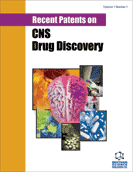Abstract
Despite recent advances in cancer treatment and diagnosis, the prognosis for patients with CNS tumours remains extremely poor. This is, in part, due to the difficulty in completely removing tumours surgically, and also because of the presence of the blood brain barrier, which can prevent the entry of chemotherapeutic agents typically used in cancer treatment. Despite the presence of the blood brain barrier, tumour cells are capable of entering and colonising the brain to form secondary brain tumours. Additionally, tumour related disruption of the blood brain barrier is associated with the clinical presentation of many patients, with accompanying increases in intracranial pressure due, in part, to the development of vasogenic oedema. Vasogenic oedema results because the newly formed angiogenic vessels within brain tumours do not retain the highly selective properties of the blood brain barrier, and thus allow for the extravasation of plasma proteins and water into the brain parenchyma. Tachykinins, and in particular substance P, have been implicated in blood brain barrier disruption and the genesis of cerebral oedema in other CNS insults via a process known as neurogenic inflammation. Recent evidence suggests that substance P may play a similar role in CNS tumours. It has been well established that an upregulation of substance P and its receptors occurs in a number of different cancer types, including CNS neoplasms. In addition to disrupting blood brain barrier permeability, substance P and the NK1 receptors facilitate promotion of tumour growth and the development of cerebral oedema. Accordingly, recent patents describe the potential of NK1 receptor antagonists as anti-cancer agents suggesting that substance P may provide a novel cancer treatment target. This review will examine the role of substance P in the development of CNS tumours.
Keywords: Blood-brain barrier, cerebral oedema, CNS tumours, glioma, substance P, tachykinins.
 40
40





















